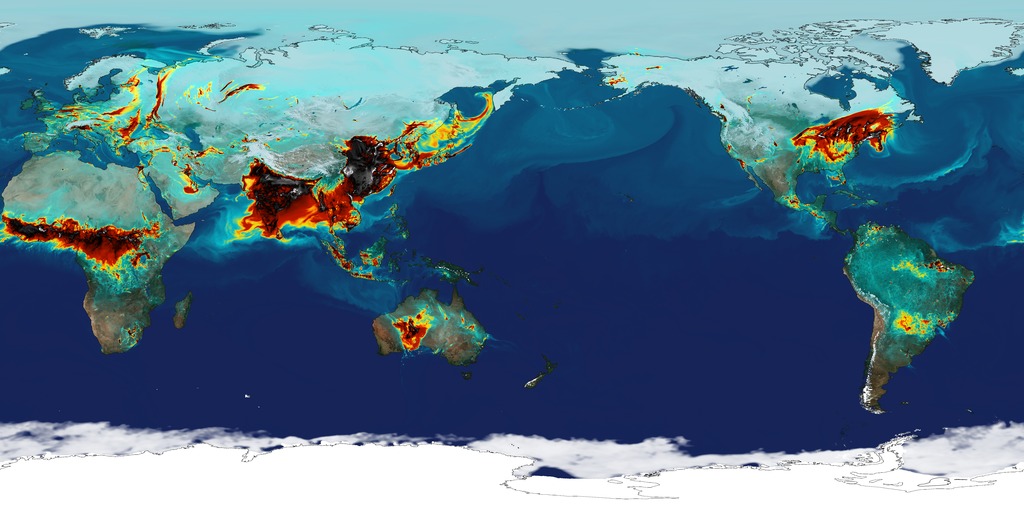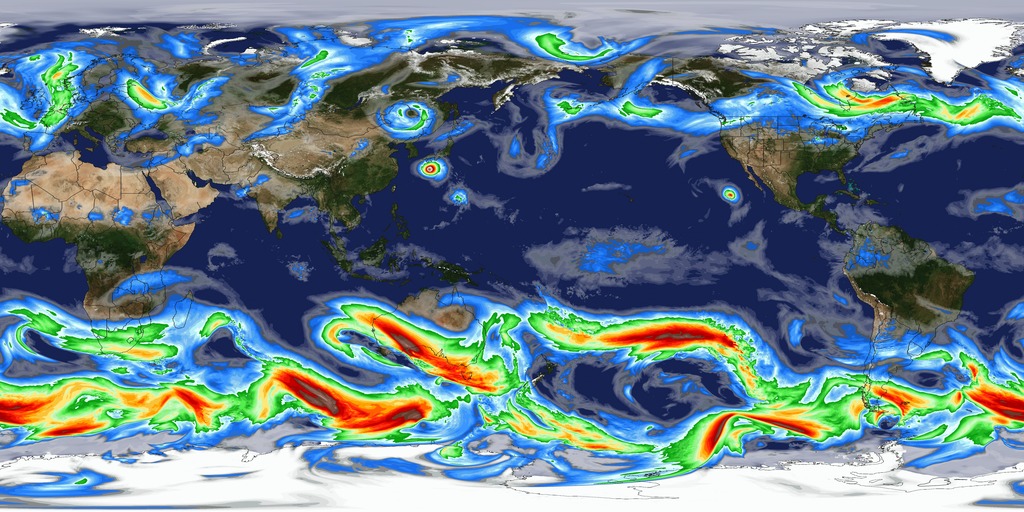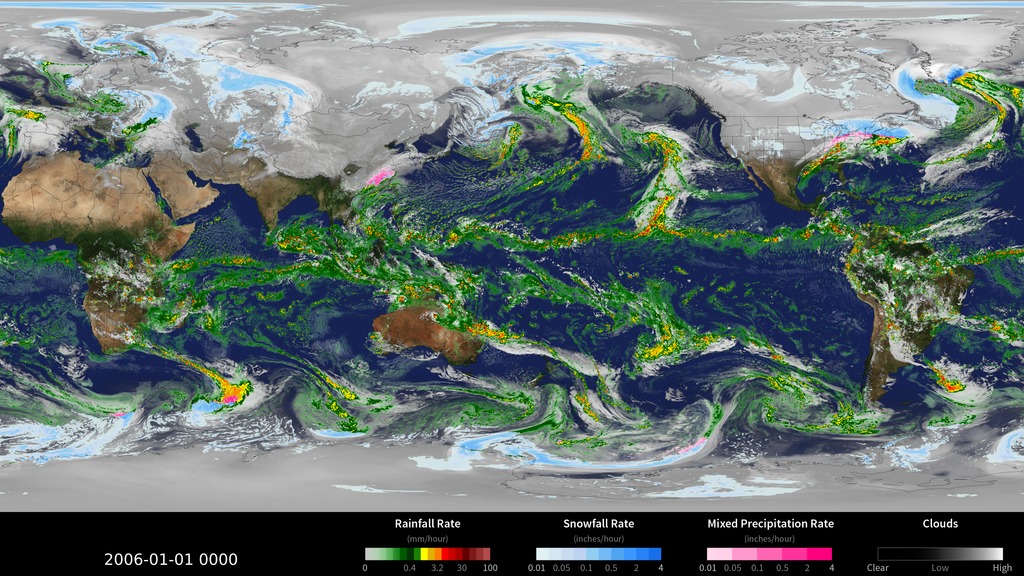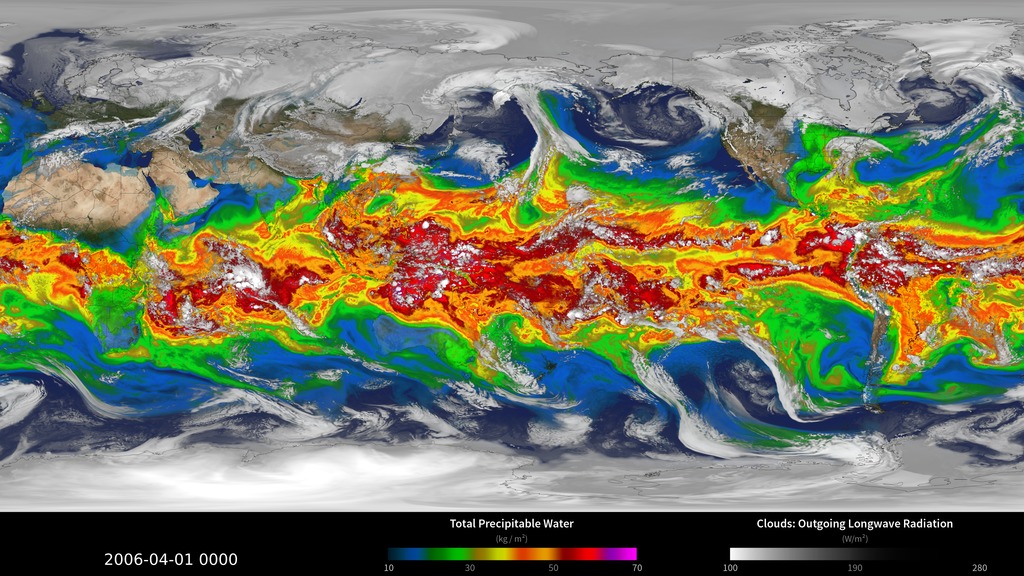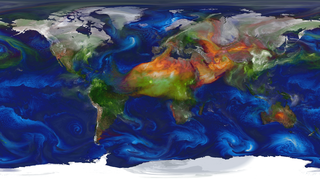Simulated Sulfur Dioxide and Sulfate Aerosols
Sulfur and Sulfates animation of Sept 1 - Dec 31, 2006
Sulfur dioxide (SO2) is an atmospheric pollutant that poses significant threats to human health. High concentrations of SO2 irritate the eyes, nose, and lungs, and can result in temporary breathing impairment. It is also a precursor to sulfuric acid, a major constituent of acid rain. SO2 is produced by the combustion of coal, fuel oil, and gasoline (since these fuels contain sulfur), and in the oxidation of naturally occurring sulfur gases, such as in volcanic eruptions. Volcanic plumes, rich in ash and SO2, are a hazard to aviation. Emitted SO2 is oxidized to form sulfate aerosols that that can alter the brightness of clouds and precipitation. Sulfate aerosols persist for long periods of time and can contribute to climate change. This simulation, produced by the Goddard Earth Observing System Model Version 5 (GEOS-5), shows SO2 and sulfate aerosols at 7-kilometer resolution from September 1, 2006 to December 31, 2006. Simulations such as this allow scientists to better understand how SO2 and sulfate aerosols travel through the atmosphere and impact Earth’s climate.
Credits
Please give credit for this item to:
NASA's Scientific Visualization Studio
-
Animator
- William Putman (NASA/GSFC)
-
Project support
- Eric Sokolowsky (Global Science and Technology, Inc.)
Release date
This page was originally published on Wednesday, December 10, 2014.
This page was last updated on Sunday, January 5, 2025 at 12:25 AM EST.

